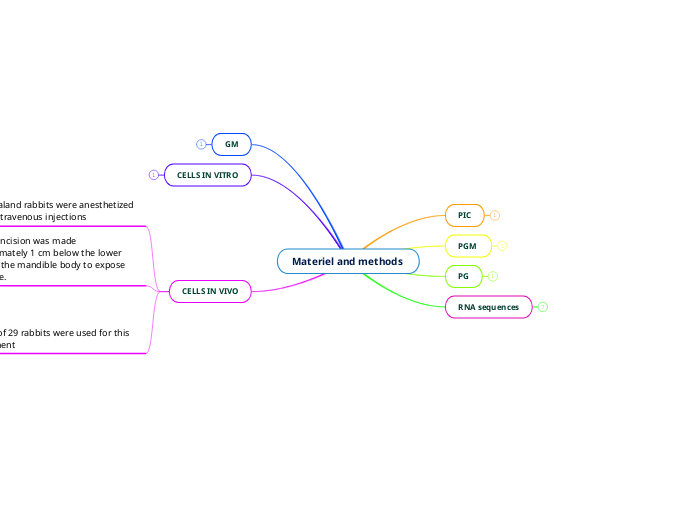Both MSCs and ECs
Materiel and methods
CELLS IN VIVO
A total of 29 rabbits were used for this experiment
the remaining nine rabbits were randomly divided into three groups for RNA-seq test:
20 rabbits were randomly divided into four groups
for radiographic and histological tests
A 2 cm incision was made
approximately 1 cm below the lower edge of the mandible body to expose the bone.
New Zealand rabbits were anesthetized using intravenous injections
CELLS IN VITRO
were differentiated from human embryonic stem
cells
GM
freeze-dried GelMA (5% w/v final) was
dissolved with the photoinitiator at 37 °C. GM was made by adding Matrigel to GelMA at the different volume ratios of 1:3 [GM (3:1)] or 1:5 [GM
(5:1)].
RNA sequences
can identifie specific RNA as rRNA or tRNA or mRNA
can be use to identifie only a part of the RNA or the entire RNA
fresh samples were taken from the defect area
Total RNA was extracted using
TRIzol , and RNA-Seq was performed by BioMarker
removed from the surrounding soft tissue, and were snap frozen in liquid nitrogen
PG
MATRIGEL + PIC exposed to UV radiation during 7 sec at 25°
PGM
MATRIGEL MODIFIED + PIC exposed to UV radiation during 7 sec at 25 °
PIC
In brief, in the presence of 0.05 mol % (relative to
the monomer) 2-oxoglutaric acid under UV light irradiation
(365 nm wavelength, 7.5 mW·cm−2) for 8 h, the precursor aqueous solutions of 1 mol·L−1 Sodium pstyrenesulfonate (NaSS) and 1 M 3-
(methacryloylamino) propyl-trimethylammonium chloride (MPTC)
were polymerizied and synthesized as PNaSS and PMPTC. PNaSS
and PMPTC, respectively. Solutions with equal volume were slowly dripped into deionized water and stirred for 30 min, forming PIC precipitates, which were dissolved in sodium chloride solution to form the PIC solution.2

